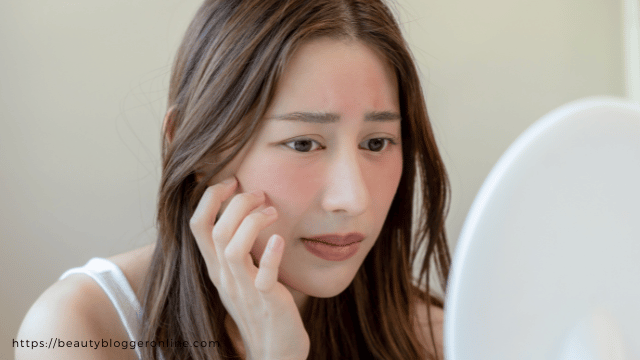7 Surprising Facts About Common Causes of Red Face Everyone has experienced facial redness at some point, whether as a result of exertion or humiliation. The most common cause of a red face is obvious. If the redness persists or comes and goes, it could be an indication of something more serious.
There are several causes of facial redness, but inflammation is the root cause. Let’s have a look at some of the most common causes of facial redness:
Table of Contents
7 Surprising Facts About Common Causes of Red Face
Menopause is the first stage of menopause.
Your rapid flushing may be caused by hormone swings caused by menopause if you’re a woman around the age of 50 (or earlier or later, depending on your genetics and specific conditions).
Hot flashes, a frequent menopause symptom, can also cause flushing of the neck and face. An increase in blood flow to certain locations causes flushing.
Thyroid illness
Thyroid illness is caused by the thyroid gland’s over-or under-activity (the butterfly-shaped organ in the neck). Thyroid hormone levels that are too low might cause skin abnormalities.
Hyperthyroidism (an overactive thyroid) can increase blood flow, resulting in facial warmth and redness.
Contact dermatitis is the third most common type of dermatitis.
An allergic reaction causes contact dermatitis, which is characterised by skin irritation and redness. Rashes appear to arise when the skin is inflamed or allergic to substances found in personal-care products or exposure to the environment. Contact dermatitis on the face can be caused by lotions, cosmetics, and scents.
Itching, redness, blisters, scaly skin, and pimples are common symptoms of kin allergy. Furthermore, you may develop this reaction after years of using an allergen-containing product.
Perioral dermatitis is a type of dermatitis that affects the area around the mouth.
A red facial rash is associated with perioral dermatitis. As a result, it’s easy to confuse it with other skin disorders. Perioral dermatitis resembles rosacea in appearance and treatment. Acne around the mouth, eyes, and nose is also a possibility.
The exact aetiology of perioral dermatitis is unknown, but specialists believe it is caused by an irritation or allergy caused by excessive use of over-the-counter steroids or hydrocortisone creams.
Atopic dermatitis is a type of atopic dermatitis that affects
Eczema, commonly known as atopic dermatitis, is an itchy, chronic skin disorder that affects one out of every ten Americans. Though it is more common in children, it can be a lifetime problem for adults.
Inflammation caused by atopic dermatitis is caused by an inherent immune system malfunction that results in dry, red, itchy, and irritated skin. It can affect any part of the body, including the face.
A hereditary element could be to blame for eczema. Triggers in the environment, such as pollen or soap, might cause flare-ups. Hydrate your skin properly, prevent triggers, and use prescription lotions and ointments to relieve atopic dermatitis. If nothing else works, your dermatologist may recommend cortisone shots.
Shingles, no
Shingles could be another cause of facial redness. This is a condition brought on by the reactivation of the herpes zoster virus (the same virus that triggers chickenpox). It causes a painful, red, bumpy rash and is more common in people who have a weak immune system.
Rosacea is a skin condition that affects people of all ages.
Rosacea is an inflammatory skin disorder with a variety of symptoms. A rosy complexion from fine, red pimples or bumps, broken capillaries focused in the T-zone, and dynamic flushing are all possible indications. Though experts are unsure of what causes rosacea, they believe it is caused by environmental and genetic factors, as well as aberrant immunological signals.
If you have rosacea, your blood vessels become overactive, and your skin becomes exceedingly irritated. Symptoms of rosacea might be triggered by hormonal fluctuations, hot foods, emotional disturbances, or changes in temperature.
